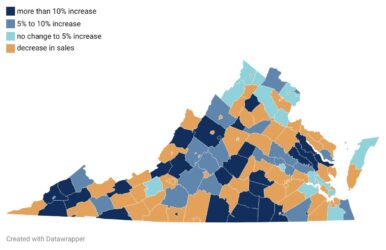Summary:
- Judge rules Trump-backed prosecutor Lindsey Halligan was illegally appointed
- Criminal cases against Comey and Letitia James dismissed without prejudice
- Defendants also allege prosecutions were politically vindictive
- Ruling marks latest setback for Trump administration‘s efforts to pursue opponents
WASHINGTON (AP) — A federal judge on Monday dismissed the criminal cases against former FBI Director James Comey and New York Attorney General Letitia James, concluding that the prosecutor who brought the charges at President Donald Trump‘s urging was illegally appointed by the Justice Department.
The rulings from U.S. District Judge Cameron McGowan Currie halt at least for now a pair of prosecutions that had hastened concerns that the Justice Department was being weaponized to pursue the president’s political adversaries and amount to a stunning rebuke of the Trump administration’s legal maneuvering to install a loyal, and inexperienced, prosecutor willing to file the cases.
The orders make Lindsey Halligan the latest Trump administration prosecutor to be disqualified because of the manner in which they were appointed. Both defendants had asked for the cases to be dismissed with prejudice, meaning that the Justice Department would not be able to bring them again. But the judge instead dismissed them without prejudice, though it was not immediately clear if or how the Justice Department might attempt to revive the prosecutions.
The challenge to Halligan’s appointment was one piece of a multiprong assault on the indictments by both Comey and James, who had each sought to have their cases dismissed on grounds that the prosecutions were vindictive. Comey’s lawyers had also seized on irregularities in the grand jury process in seeking to get the prosecution thrown out. Each of those requests remains pending.
Monday’s order deals exclusively with the mechanism the Trump administration employed to appoint Halligan, a former White House aide with no prior prosecutorial experience, to lead one of the Justice Department’s most elite and important offices.
Halligan was named to the job in September after a different interim U.S. attorney, Erik Siebert, was effectively forced out amid pressure from the Trump administration to file charges against Comey and James.
After Siebert resigned, Comey’s lawyers argued, the judges of the federal court district should have had exclusive say over who got to fill the vacancy. Instead, Trump nominated Halligan while publicly imploring Bondi in a social media post to take action against his political opponents, saying in a Truth Social post that “JUSTICE MUST BE SERVED, NOW!!!”
Comey was indicted days later on charges of making a false statement and obstructing Congress, and James was charged soon after that in a mortgage fraud investigation.
In a statement, James said, “I am heartened by today’s victory and grateful for the prayers and support I have received from around the country.”
“I remain fearless in the face of these baseless charges as I continue fighting for New Yorkers every single day,” the New York attorney general, a Democrat, said.
Judges have separately disqualified interim U.S. attorneys in New Jersey, Los Angeles and Nevada, but have permitted cases brought under their watch to move forward. But lawyers for Comey and James had argued that Currie’s ruling needed to go even further because Halligan was the sole signer of the indictments and the driving force behind them.
Comey has for years been one of Trump’s chief antagonists. Appointed to the job in 2013 by President Barack Obama, Comey, at the time of Trump’s 2016 election, was overseeing an investigation into whether his presidential campaign had conspired with Russia to sway the outcome of the race. Furious over that investigation, Trump fired Comey in May 2017 and the two officials have verbally sparred in the years since.
James has also been a frequent target of Trump’s ire, especially since she won a staggering judgment against him and the Trump Organization in a lawsuit alleging he defrauded banks by overstating the value of his real estate holdings on financial statements. An appeals court overturned the fine, which had ballooned to more than $500 million with interest, but upheld a lower court’s finding that Trump had committed fraud.
____
Associated Press writers Michael R. Sisak in New York and Lindsay Whitehurst and Alanna Durkin Richer in Washington contributed to this report.


